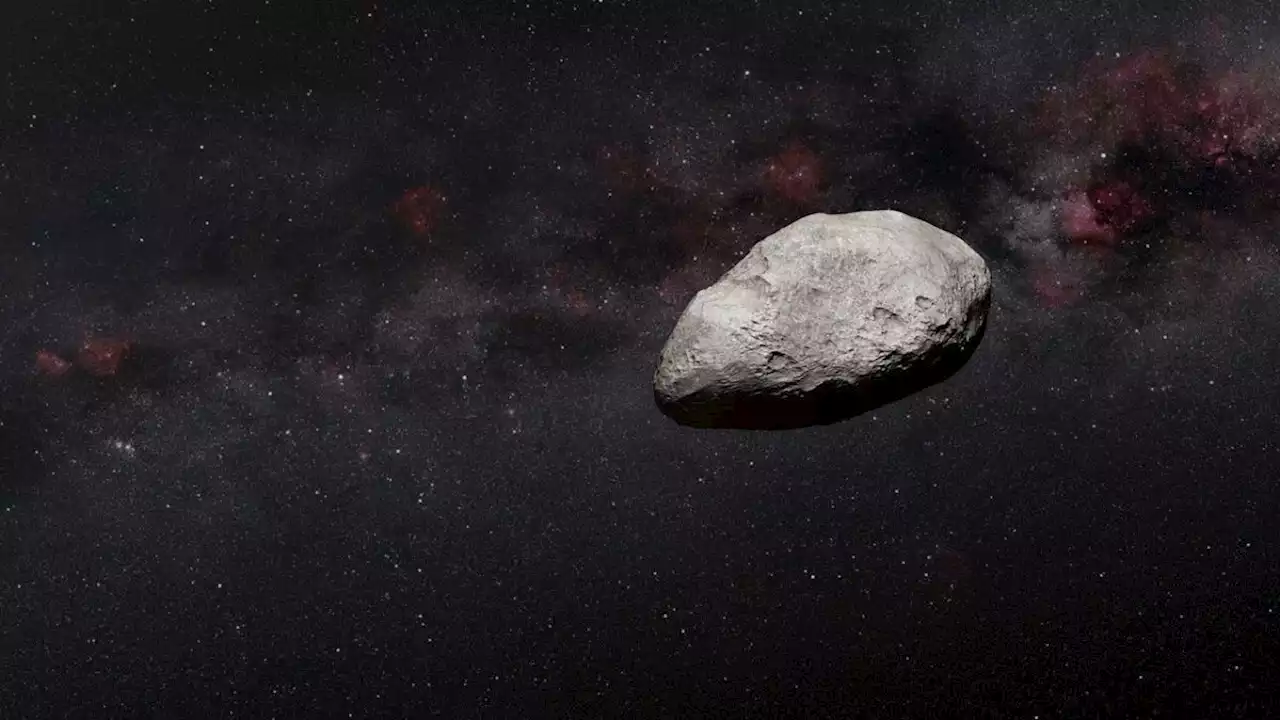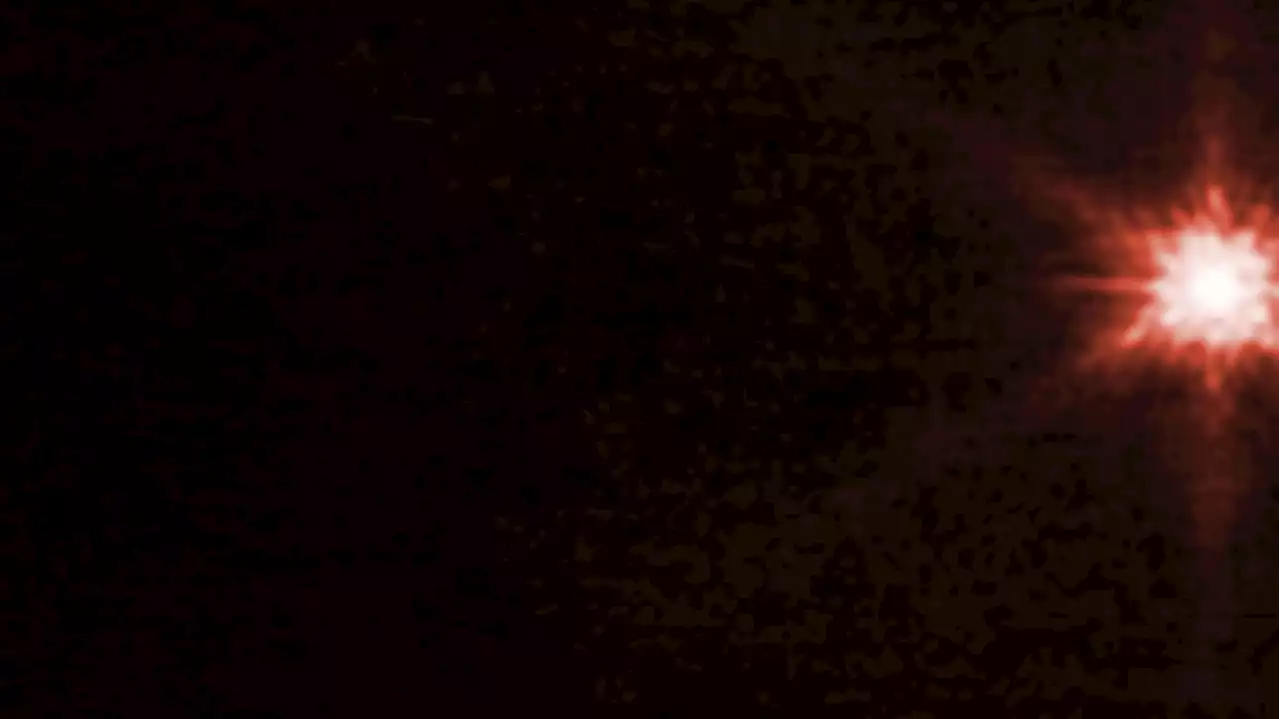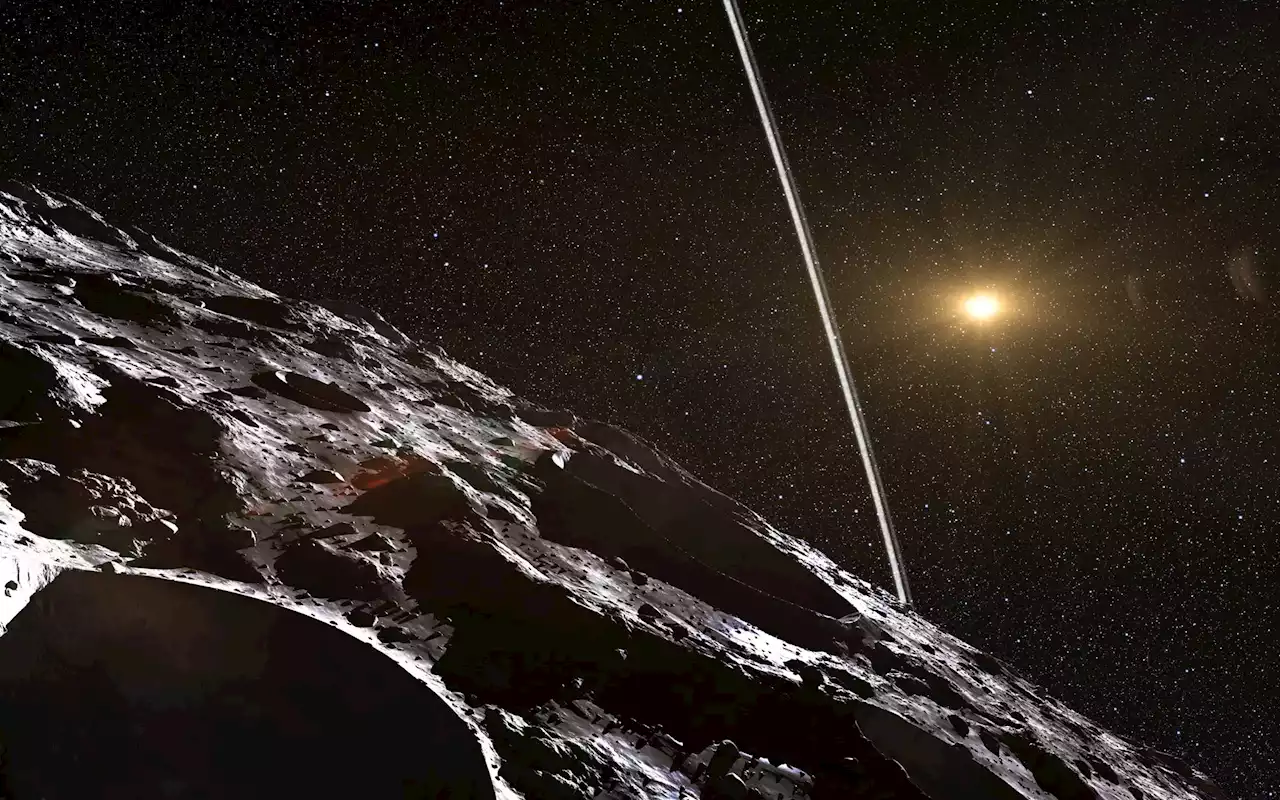In an observational feat of high precision, scientists used a new technique with NASA’s James Webb Space Telescope to capture the shadows of starlight cast by the thin rings of Chariklo. Chariklo is an icy, small body, but the largest of the known Centaur population, located more than 2 billion mile
. The astronomers had been watching a star as Chariklo passed in front of it, blocking the starlight as they had predicted. Astronomers call this phenomenon an occultation. To their surprise, the star blinked off and on again twice before disappearing behind Chariklo, and double-blinked again after the star reemerged. The blinking was caused by two thin rings – the first rings ever detected around a small solar system object.
This video shows observations taken by NASA’s James Webb Space Telescope of a star as Chariklo passes in front of it. The video is composed of 63 individual observations with Webb’s Near-infrared Camera Instrument’s view at 1.5 microns wavelength obtained over ~1 hour on Oct. 18. Careful analysis of the star’s brightness reveals that the rings of the Chariklo system were clearly detected.
The Webb occultation light curve, a graph of an object’s brightness over time, revealed that the observations were successful! The rings were captured exactly as predicted. The occultation light curves will yield interesting new science for Chariklo’s rings. Santos-Sanz explained: “As we delve deeper into the data, we will explore whether we cleanly resolve the two rings.
United States Latest News, United States Headlines
Similar News:You can also read news stories similar to this one that we have collected from other news sources.
 The James Webb Space Telescope just found an asteroid by total accident, its smallest object yetThe Washington Monument-sized space rock was discovered in data not intended to hunt asteroids and shows how useful the powerful telescope is close to home.
The James Webb Space Telescope just found an asteroid by total accident, its smallest object yetThe Washington Monument-sized space rock was discovered in data not intended to hunt asteroids and shows how useful the powerful telescope is close to home.
Read more »
 James Webb Space Telescope reveals stellar 'clumps' from the most distant universeWith a little help from nature, the James Webb Space Telescope reveals clumps of stars nearly as old as the universe itself.
James Webb Space Telescope reveals stellar 'clumps' from the most distant universeWith a little help from nature, the James Webb Space Telescope reveals clumps of stars nearly as old as the universe itself.
Read more »
 Webb Space Telescope 'unexpectedly' finds its smallest asteroid yetThe James Webb Space Telescope may have accidentally discovered an asteroid that NASA says is likely the smallest observed to date by the $10 billion-dollar observatory.
Webb Space Telescope 'unexpectedly' finds its smallest asteroid yetThe James Webb Space Telescope may have accidentally discovered an asteroid that NASA says is likely the smallest observed to date by the $10 billion-dollar observatory.
Read more »
 James Webb Space Telescope pushed past its limits to observe DART asteroid crashThe grand telescope was not built to track very fast moving objects, but it managed nonetheless.
James Webb Space Telescope pushed past its limits to observe DART asteroid crashThe grand telescope was not built to track very fast moving objects, but it managed nonetheless.
Read more »
 Webb Space Telescope reveals stellar clusters from distant galaxiesImages from the James Webb Space Telescope have helped scientists to examine compact structures of star clusters inside distant galaxies for the first time.
Webb Space Telescope reveals stellar clusters from distant galaxiesImages from the James Webb Space Telescope have helped scientists to examine compact structures of star clusters inside distant galaxies for the first time.
Read more »
 What's the fairest way to share cosmic views from Hubble and James Webb telescopes?Astronomers are debating how quickly the observations of the Hubble Space Telescope and the James Webb Space Telescope should be made public.
What's the fairest way to share cosmic views from Hubble and James Webb telescopes?Astronomers are debating how quickly the observations of the Hubble Space Telescope and the James Webb Space Telescope should be made public.
Read more »
